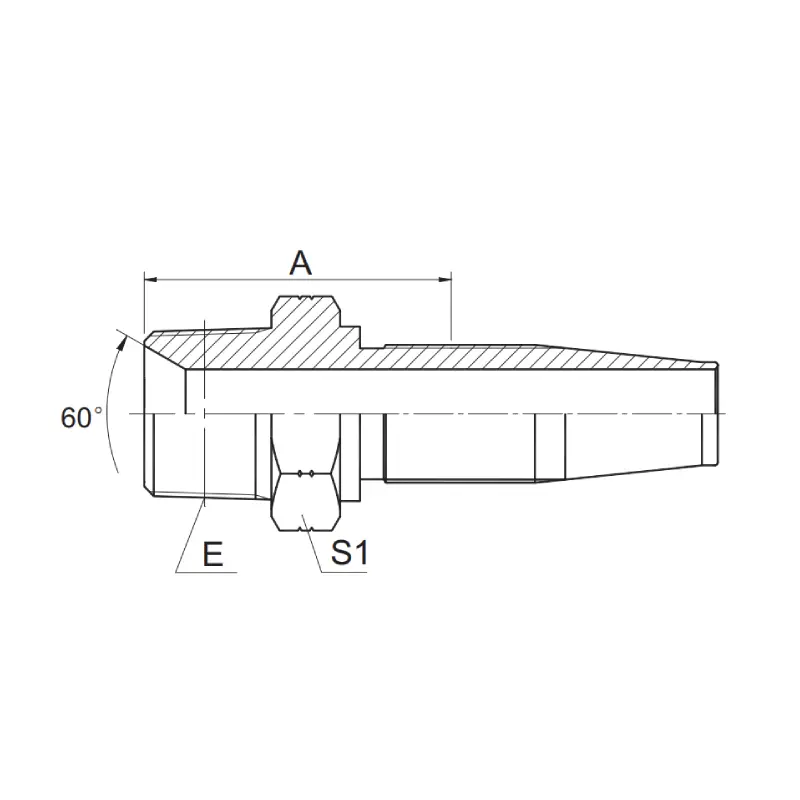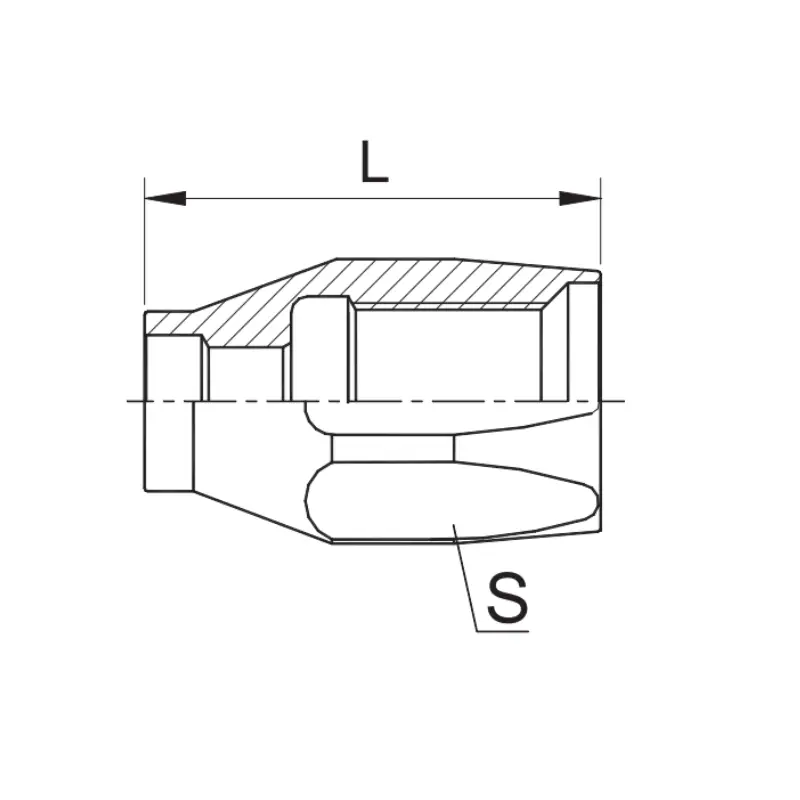Hydraulic hoses are essential components in various industries, from construction and agriculture to manufacturing and automotive. They are responsible for transmitting high-pressure hydraulic fluid to power various equipment and machinery. To ensure optimal performance and safety, proper connection of hydraulic hoses is crucial.
In this blog post, we will delve into the different types of hydraulic hose connections and provide a step-by-step guide on how to connect them correctly. Whether you’re a seasoned mechanic or a DIY enthusiast, this information will empower you to handle hydraulic hose connections with confidence.
What Is Hydraulic Hose Connection
A hydraulic hose connection is a critical component in any hydraulic system, responsible for securely joining hydraulic hoses to other components like pumps, valves, and cylinders. These connections ensure the safe and efficient transfer of hydraulic fluid, which powers various machinery and equipment.
Hydraulic Hose Connection Types

Hydraulic hose connections are the critical junctions in a hydraulic system, ensuring the seamless flow of hydraulic fluid. The type of connection used significantly impacts the system’s performance, reliability, and safety. Let’s delve into the two primary types: crimped fittings and reusable fittings.
Crimped Hydraulic Fittings
Crimped fittings are a popular choice for their durability and reliability. They involve a metal ferrule that is crimped onto the hose using specialized equipment, creating a permanent bond.
Types of Crimped Fittings:
- SAE (Society of Automotive Engineers) Fittings: These are industry-standard fittings used in various hydraulic applications. They come in different configurations, such as straight, 45-degree, and 90-degree fittings, to accommodate different hose routing needs.
- Metric Fittings: Metric fittings are commonly used in European and Asian hydraulic systems. They are available in a wide range of sizes and thread pitches to suit diverse applications.
- High-Pressure Fittings: These fittings are designed to withstand extremely high pressures, often found in industrial and mobile equipment. They are typically made from high-strength materials and have specialized crimping techniques.
Advantages of Crimped Fittings:
- Superior Strength and Durability: The crimping process creates a robust bond between the ferrule and the hose, providing excellent resistance to pressure, vibration, and shock.
- Leak-Proof Performance: When properly crimped, these fittings offer exceptional sealing capabilities, minimizing the risk of fluid leaks.
- Wide Range of Applications: Crimped fittings are suitable for a variety of hydraulic systems, from low-pressure applications to high-pressure industrial equipment.
Reusable Hydraulic Fittings
Reusable fittings offer flexibility and convenience, allowing for repeated assembly and disassembly of hydraulic hoses. They typically consist of a threaded nipple, a compression nut, and a ferrule.
Types of Reusable Fittings:
- SAE Reusable Fittings: These fittings are similar to SAE crimped fittings but use a compression mechanism to secure the hose to the nipple. They are often used in applications where frequent hose replacement or reconfiguration is required.
- Metric Reusable Fittings: Metric reusable fittings follow metric standards and are commonly used in European and Asian hydraulic systems. They offer similar advantages to SAE reusable fittings in terms of flexibility and ease of assembly.
- High-Pressure Reusable Fittings: These fittings are designed for high-pressure applications and use specialized sealing mechanisms to prevent leaks. They are often used in industrial and mobile equipment where frequent hose changes may be necessary.
Advantages of Reusable Fittings:
- Ease of Assembly and Disassembly: Reusable fittings can be easily assembled and disassembled without the need for specialized crimping equipment.
- Flexibility: They allow for quick and easy hose replacement or reconfiguration, reducing downtime.
- Cost-Effective: Reusable fittings can be reused multiple times, reducing the overall cost of ownership.
Common Types of Hydraulic Hose Connectors
Hydraulic hose connectors are crucial components in hydraulic systems, ensuring reliable fluid flow and system integrity. Here are some of the most common types:
1. O-Ring Face Seal (ORFS) Connectors
- Features: A flat face seal with an O-ring that provides a reliable and durable connection.
- Applications: Widely used in various hydraulic systems due to their versatility and ease of assembly.
2. Mated Angle (SAE) Connectors
- Features: A tapered male fitting that mates with a tapered female fitting, creating a tight seal.
- Applications: Commonly used in hydraulic systems that require high-pressure and high-temperature resistance.
3. Tapered Thread (NPT) Connectors
- Features: A tapered thread design that creates a tight seal when tightened.
- Applications: Often used in lower-pressure applications and for connecting hoses to pipes or fittings with NPT threads.
4. Hydraulic Hose Crimp Fittings
- Features: A permanent connection between the hose and fitting, providing a reliable and leak-proof seal.
- Applications: Widely used in a variety of hydraulic systems, especially in high-pressure applications.
5. Reusable Hydraulic Fittings
- Features: Can be reused multiple times, making them a cost-effective option.
- Applications: Often used in lower-pressure applications or for temporary connections.
Choosing the Right Connector:
When selecting a hydraulic hose connector, consider the following factors:
- Pressure Rating: Ensure the connector can withstand the maximum operating pressure of the system.
- Temperature Range: Choose a connector that can operate within the expected temperature range.
- Fluid Compatibility: Select a connector material that is compatible with the hydraulic fluid being used.
- Installation Method: Consider the installation method (crimping, threading, or clamping) and the tools required.
By understanding the different types of hydraulic hose connectors and their applications, you can select the right components for your specific hydraulic system.
How to Choose Hydraulic Hose Connection
Selecting the right hydraulic hose connection is crucial for ensuring the safety, efficiency, and longevity of your hydraulic system. Here are the key factors to consider when making your choice:
1. Pressure Rating:
- System Pressure: Determine the maximum working pressure of your hydraulic system.
- Safety Factor: Choose a connection with a pressure rating significantly higher than the system pressure to account for pressure spikes and surges.
2. Temperature Rating:
- Operating Temperature: Consider the temperature range in which the hydraulic fluid will operate.
- Material Compatibility: Ensure the connection materials are compatible with the fluid and temperature extremes.
3. Fluid Compatibility:
- Fluid Type: Identify the type of hydraulic fluid (e.g., mineral oil, synthetic oil, water-based fluid).
- Material Compatibility: Choose a connection material that is resistant to the fluid’s chemical properties.
4. Vibration and Shock:
- Environmental Conditions: Assess the level of vibration and shock the system will experience.
- Connection Strength: Select a robust connection design that can withstand these forces.
5. Frequency of Disconnection:
- Maintenance Needs: Determine how often the connections will need to be disassembled and reassembled.
- Connection Type: Choose between permanent (crimped) or reusable fittings based on your needs.
6. Hose Size and Type:
- Flow Rate: Ensure the connection is compatible with the hose’s inner diameter and flow capacity.
- Hose Material: Consider the hose material and its compatibility with the connection type.
7. Installation and Maintenance:
- Ease of Installation: Choose a connection that is easy to install and requires minimal specialized tools.
- Maintenance Requirements: Consider the maintenance needs of the connection, such as lubrication or torque specifications.
Types of Hydraulic Hose Connections:
1. Crimped Fittings:
- Permanent Connection: Once crimped, the connection is permanent.
- High Strength and Durability: Offers excellent resistance to pressure, vibration, and shock.
- Leak-Proof: Provides reliable sealing to prevent fluid leakage.
2. Reusable Fittings:
- Multiple Disconnections: Can be disassembled and reassembled multiple times.
- Flexibility: Suitable for applications requiring frequent hose changes or reconfigurations.
- Lower Strength: May not be as strong as crimped fittings, especially in high-pressure applications.
Additional Considerations:
- Safety Standards: Adhere to relevant industry standards and regulations to ensure safe operation.
- Manufacturer‘s Recommendations: Follow the manufacturer‘s guidelines for proper installation, maintenance, and torque specifications.
- Regular Inspection: Inspect connections regularly for signs of wear, damage, or leaks.
By carefully considering these factors and following best practices, you can select the right hydraulic hose connection to ensure the optimal performance and reliability of your hydraulic system.
Conclusion
Proper hydraulic hose connection is crucial for ensuring the safe and efficient operation of hydraulic systems. By understanding the different types of connections and following best practices, you can significantly reduce the risk of leaks, failures, and accidents.
Ready to upgrade your hydraulic systems with high-quality, durable hoses? Kingdaflex offers a wide range of wholesale hydraulic hoses to meet your specific needs. Our products are designed to withstand demanding conditions and provide optimal performance.
Visit our website today to explore our selection and place your order: [Insert Kingdaflex Website Link]








